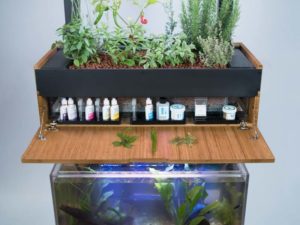In 2013, during their time at MIT, students Jamie Byron and Gabe Blanchet brainstormed the idea of people supporting themselves by growing food at home, in a personal “grove.” They designed a gardening system and connected it to an app, allowing users to personalize the environment of their grove to their needs and plants. The app only controls a few things, lighting schedule, what nutrients go into the water and the specific type of plants that are grown. The two designed an aquaponic system, basically a farm on top of a fish tank, where the fish provide specific types of nutrients for the soil and the food. Their current product is small a small scale operation, meant only for an individual or a family. But the technology has the potential for for a much larger scale and has piqued the interest of small US growers and even Middle Eastern green houses. In 2014 Grove Labs received 2 million in funding and has created a successful product. It’s amazing to see how an idea grew from two college students in a dorm room into a successful business and also something that’s good for the environment.



